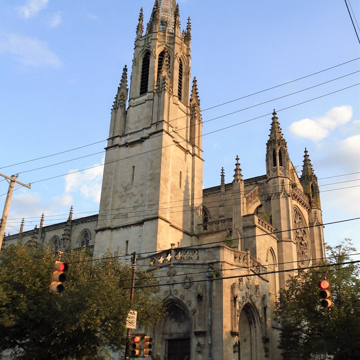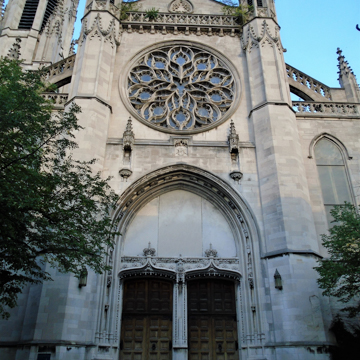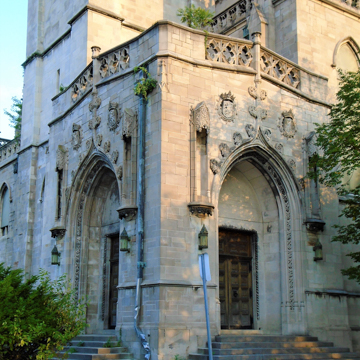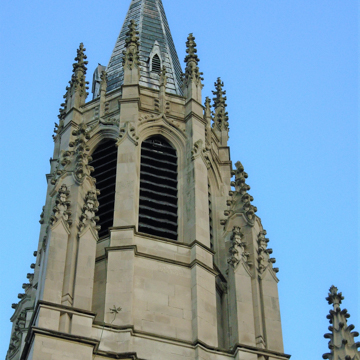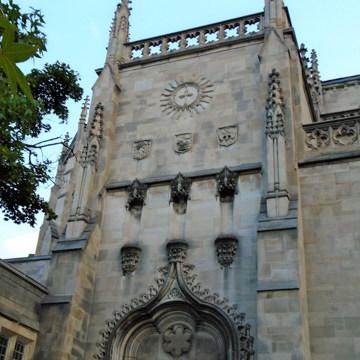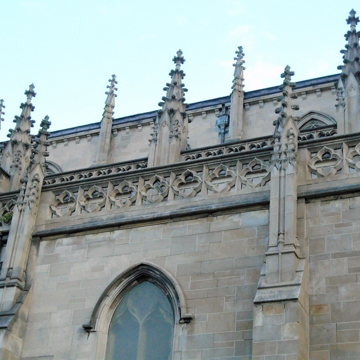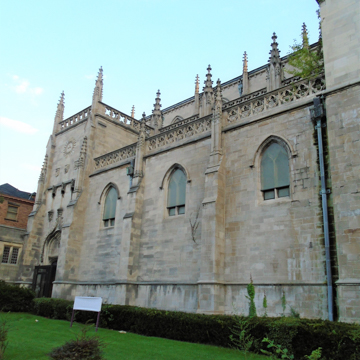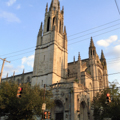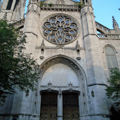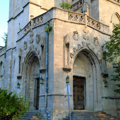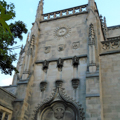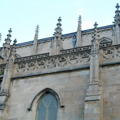This is the most inventive of Cram's three churches in Pittsburgh, with a powerful and idiosyncratic Spanish-inspired design for a congregation originally of German and Irish extraction and now African American. The surrounding blocks of identical frame houses are dwarfed by the church's tall and spiky spire. The numerous pinnacles on the sides and the crocketed spires on the facade make the vibrancy of this Iberian fantasy—a restatement of the Cathedral of Burgos in Spain—all the more powerful. Inside, Catalan Gothic provided Cram's precedent for a forest of slender columns and ribbed vaults that creates the most dramatic nave in Pittsburgh.
You are here
Holy Rosary Church
If SAH Archipedia has been useful to you, please consider supporting it.
SAH Archipedia tells the story of the United States through its buildings, landscapes, and cities. This freely available resource empowers the public with authoritative knowledge that deepens their understanding and appreciation of the built environment. But the Society of Architectural Historians, which created SAH Archipedia with University of Virginia Press, needs your support to maintain the high-caliber research, writing, photography, cartography, editing, design, and programming that make SAH Archipedia a trusted online resource available to all who value the history of place, heritage tourism, and learning.


